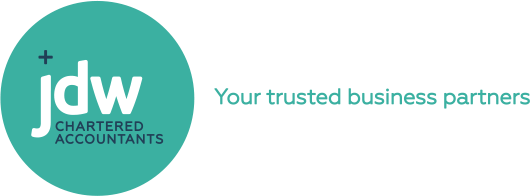Research and Development Tax Credits
Research & Development Tax Credits

Would you like a refund of your tax losses? If your business is an innovator, then you may qualify for a refund. Most normal businesses can't get refunds for tax losses, they can only carry tax losses forward, so you need to be able to prove that you qualify for this special tax refund. Each project has to be evaluated on its merits, so some of your activities may qualify while others don't.
On 7 May 2019, the Taxation (Research and Development Tax Credits) Act 2019 received Royal Assent. This means more entities will qualify for refundable tax credits under the new scheme and now there are two tax credits to consider.
Research & Development Loss Tax Credits (from 1 April 2015)
"Cash out" (have refunded) up to 28% of any tax losses associated with eligible R&D activity if your company is resident in New Zealand. The maximum claimable value in 2019-2020 is $476,000.
The amount you can claim as a tax credit will be the lesser of the company's:
net loss for the year x 28%, or
total R&D expenditure for the tax year x 28%, or
total R&D labour expenditure for the year x 1.5 x 28%.
Are you eligible for this wonderful windfall? There are three areas to consider:
- Corporate eligibility
- R &D Activities
- Wage intensity
Corporate Eligibility (2015 credits)
Is your entity:
A NZ resident private company
Not foreign resident or dual resident under double tax agreement.
Not a look through company (LTC)
Not listed on a recognised exchange
Not majority owned by public authority, local authority, crown research institute or state enterprise
Not established by or subject to:
- the Education Act 1989, or
- the New Zealand Public Health and Disability Act 2000, or
- the Crown Entities Act 2004
R & D Activities Explained
Research is original, planned investigation with a view to gaining new scientific or technical knowledge and understanding. Development takes place when a project uses research findings to produce new, innovative or substantially improved materials, devices, products, processes, systems or services.
Innovation is a key part of R&D and so is having a clearly defined project. If you are reverse engineering an existing process or product, replicating a competitor's product, or adapting your product to a new customer's needs, it won't be R&D.
Data capture & analysis may be R&D only if it requires new technical solutions.
Specific development activities are excluded for the purpose of the R&D Loss Tax Credit, such as pre-production tooling, trial runs, commercial production, debugging and software maintenance.
Wage Intensity Explained
You must spend 20% or more of your total labour expenditure on R&D to be eligible. Total labour expenditure includes salary or wages, shareholder-employee salaries, 66% of contractor payments excluding GST. (The 66% is intended to exclude the profit & overhead portion of the contract price.) This means that you will need to keep good time records of what activities each person does for each project.
How to Apply
There is a one-off registration to complete:
Loss Recovery Events
When your company trades into profit, you gradually repay your tax credit. So there is no increase in imputation credit account balance until you have repaid the R&D loss tax credit.
If you have cashed out loss tax credits, you will need to repay the credits in full if one or more of these events occur:
- Disposal of intellectual property
- Appointment of a liquidator
- Company migration from NZ or no longer a company
- Sale of shares greater than 90%
Research & Development Tax Credits (from 1 April 2019)
Eligible entities will receive a 15% tax credit from the beginning of a business's 2020 tax year. Up to $255,000 refundable in 2020. The minimum R&D expenditure is $50,000 per year up to $120m cap. These tax credits replace the Callaghan Growth Grants over time.
The new 15% tax credit can be claimed as well as the R&D Tax loss credit of 28% . The definition of eligible R&D is different for both credits, and the definition of eligible entities is also different.
Core R&D activity must:
• be performed and managed on a day to day basis in New Zealand. Up to 10% of R&D can be performed overseas.
• have a material purpose of creating new knowledge or a new or improved process, service or goods. The test of "new" is on a worldwide basis.
• use a systematic approach, and
• have a material purpose of resolving scientific or technological uncertainty (scientific or technological uncertainty exists if knowledge is not publicly available or deducible by a competent professional).
Having a material purpose means that the required objective must be significant or important. This requirement is intended to disqualify new knowledge or applications that are discovered by accident. It is not a requirement that the R&D is successful and results in something new or improved. All R&D increases knowledge and activities that are unsuccessful can qualify. Similarly, a new or improved process, service or good does not necessarily qualify for the tax credit just because science or technology were used in its creation.
The entity must have a fixed establishment in NZ and have control over core R&D directly or within the corporate group.
How are Tax Credits Applied
R&D Tax credits are applied firstly against income tax liability for the year the credits relate to, then applied to current income tax or provisional tax liability for a future tax year. You may apply to have the credits applied to a different tax period or tax type. Remaining tax credits may be carried forward subject to continuity rules or cashed out.
How to Apply
An application form will soon be available to complete after Year 1 alongside the 2020 income tax return. An in-year application process is in development for year 2 onwards.
Record Keeping Requirements
General records of income, expenses, assets and liabilities just like any business.
Records to show you are eligible for the tax credit: structure, the scientific or technological uncertainty you are trying to resolve state of knowledge at the start of the project.
Additionally, to show you have a systematic approach, you require:
R&D project plans, resource allocations, start and end dates
Progress and status reports
Advice or Research documents to show that knowledge sought was not readily deducible by a competent professional
Basis for apportioning expenses
Expenditure on employee time on eligible activities should be recorded either through a time recording system or other project documentation such as log sheets or project reporting.
For the new tax credit, the records used to relate expenditure to the R&D activities and record keeping must be occurring at the same time as the eligible activities and not retrospectively treated, for example at the end of the tax year or at the end of the project.
Conclusion
The new R&D tax credits will be more accessible to a wider range of entities, particularly SMEs, and therefore promote more research and development in New Zealand. The strict interpretation of R&D and the level of record-keeping required to track expenditure may still make it difficult for SMEs to access these tax credits. In the 2019-2020 year, the cashflow effect is less beneficial than a growth grant, as businesses need to pay their expenses and lodge a return before they can apply for the refund. The gradual introduction of in-year approval from Year 2, may help to ease the cashflow burden for innovative businesses.
UPDATE 5 July 2019: IRD has issued guidance that the R&D supplementary return for 2019/2020 must be filed within 30 days after the income tax return due date (30 April 2021 for standard date taxpayers). For the following year, general approval must be sought by the 7 th day of the second month after the balance date (7 May for standard taxpayers).
This information in this article is for general information purposes and should not be relied on. If you require advice is relation to your specific circumstances please contact the author for a consultation or go to: https://govt.loomio.nz/rdtaxcredit/ for IRD discussion on the tax changes.
Download a PDF version here or contact the author by email. Like our Facebook page for regular tips.
Serena Irving is a director in JDW Chartered Accountants Limited, Ellerslie, Auckland. JDW is a professional team of qualified accountants, auditors, business consultants, tax advisors, trust and business valuation specialists.




